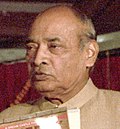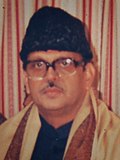 |
|---|
| Party | Votes | % | Seats |
|---|
| Indian National Congress (Indira) | 99,799,403 | 36.26 | 232 |
| Bharatiya Janata Party | 55,345,075 | 20.11 | 120 |
| Janata Dal | 32,589,180 | 11.84 | 59 |
| Communist Party of India (Marxist) | 16,954,797 | 6.16 | 35 |
| Janata Party | 9,267,096 | 3.37 | 5 |
| Telugu Desam Party | 8,223,271 | 2.99 | 13 |
| Communist Party of India | 6,851,114 | 2.49 | 14 |
| Dravida Munnetra Kazhagam | 5,741,910 | 2.09 | 0 |
| All India Anna Dravida Munnetra Kazhagam | 4,470,542 | 1.62 | 11 |
| Bahujan Samaj Party | 4,420,719 | 1.61 | 2 |
| Shiv Sena | 2,208,712 | 0.80 | 4 |
| Revolutionary Socialist Party | 1,749,730 | 0.64 | 4 |
| Asom Gana Parishad | 1,489,898 | 0.54 | 1 |
| Jharkhand Mukti Morcha | 1,481,900 | 0.54 | 6 |
| Janata Dal (Gujarat) | 1,399,702 | 0.51 | 1 |
| Pattali Makkal Katchi | 1,283,065 | 0.47 | 0 |
| All India Forward Bloc | 1,145,015 | 0.42 | 3 |
| Indian Congress (Socialist) – Sarat Chandra Sinha | 982,954 | 0.36 | 1 |
| Indian Union Muslim League | 845,418 | 0.31 | 2 |
| Indian Peoples Front | 644,891 | 0.23 | 0 |
| Natun Asom Gana Parishad | 494,628 | 0.18 | 0 |
| Karnataka Rajya Ryota Sangha | 490,275 | 0.18 | 0 |
| Doordarshi Party | 466,869 | 0.17 | 0 |
| All India Majlis-e-Ittehadul Muslimeen | 456,900 | 0.17 | 1 |
| Kerala Congress (M) | 384,255 | 0.14 | 1 |
| Jharkhand Party | 350,699 | 0.13 | 0 |
| Haryana Vikas Party | 331,794 | 0.12 | 1 |
| Nagaland People's Council | 328,015 | 0.12 | 1 |
| Bharatiya Republican Paksha | 327,941 | 0.12 | 0 |
| Kerala Congress | 319,933 | 0.12 | 0 |
| Peasants and Workers Party of India | 295,402 | 0.11 | 0 |
| United Minorities Front, Assam | 206,737 | 0.08 | 0 |
| Lokdal | 173,884 | 0.06 | 0 |
| Marxist Co-ordination Committee | 171,767 | 0.06 | 0 |
| United Reservation Movement Council of Assam | 170,376 | 0.06 | 0 |
| Manipur Peoples Party | 169,692 | 0.06 | 1 |
| Autonomous State Demand Committee | 139,785 | 0.05 | 1 |
| Sanjukta Loka Parishad | 125,738 | 0.05 | 0 |
| Sikkim Sangram Parishad | 106,247 | 0.04 | 1 |
| Republican Party of India (Khobragade) | 91,557 | 0.03 | 0 |
| Shiromani Akali Dal (Simaranjit Singh Mann) | 88,084 | 0.03 | 0 |
| Plain Tribals Council of Assam | 87,387 | 0.03 | 0 |
| Mizo National Front | 82,019 | 0.03 | 0 |
| Sarv Jati Janata Parishad | 70,368 | 0.03 | 0 |
| Akhil Bharat Hindu Mahasabha | 67,495 | 0.02 | 0 |
| Maharashtrawadi Gomantak Party | 64,752 | 0.02 | 0 |
| Tharasu Makkal Mandram | 55,165 | 0.02 | 0 |
| Uttarakhand Kranti Dal | 47,369 | 0.02 | 0 |
| Marxist Communist Party of India (S.S. Srivastava) | 43,085 | 0.02 | 0 |
| Bharatiya Krishi Udyog Sangh | 42,504 | 0.02 | 0 |
| Jan Parishad | 37,725 | 0.01 | 0 |
| Republican Party of India | 36,541 | 0.01 | 0 |
| Amra Bangali | 35,186 | 0.01 | 0 |
| Indian Union Muslim League (IML) | 31,387 | 0.01 | 0 |
| Sampooran Kranti Das | 29,647 | 0.01 | 0 |
| Akhil Bharatiya Manav Seva Das | 28,528 | 0.01 | 0 |
| Uttar Pradesh Republican Party | 28,379 | 0.01 | 0 |
| Yuva Vikas Party | 28,159 | 0.01 | 0 |
| Communist Party of India (Marxist–Leninist) | 27,730 | 0.01 | 0 |
| Jawan Kisan Mazdoor Party | 23,929 | 0.01 | 0 |
| Proutist Bloc of India | 22,734 | 0.01 | 0 |
| Soshit Samaj Dal | 19,925 | 0.01 | 0 |
| Akhil Bharatiya Jansangh | 19,243 | 0.01 | 0 |
| Orissa Vikas Parishad | 15,893 | 0.01 | 0 |
| Hul Jharkhand Party | 15,406 | 0.01 | 0 |
| Socialist Party of India (Lohia) | 12,928 | 0.00 | 0 |
| Akhil Bharatiya Hindustani Krantikari Samajwadi Party | 12,820 | 0.00 | 0 |
| Dalit Panthers Party | 11,967 | 0.00 | 0 |
| Bharatiya Loktantrik Mazdoor Dal | 10,837 | 0.00 | 0 |
| Akhil Bharatiya Revolutionary Samaj Dal | 8,825 | 0.00 | 0 |
| Akhil Bhartiya Shivsena-Rashtrawadi | 8,810 | 0.00 | 0 |
| Asom Jatiyatabadi Dal | 8,519 | 0.00 | 0 |
| Ambedkar Makkal Iyakkam | 8,252 | 0.00 | 0 |
| Asom Jatiya Parishad | 8,047 | 0.00 | 0 |
| Socialist Party (Ramakant Pandey) | 7,104 | 0.00 | 0 |
| Akhil Bharatiya Pichhadavarg Party | 6,897 | 0.00 | 0 |
| All India Dalit Muslim Minorities Suraksha Mahasangh | 5,888 | 0.00 | 0 |
| Vidarbha Praja Party | 5,597 | 0.00 | 0 |
| Akhil Bharatiya Gram Parishad | 5,521 | 0.00 | 0 |
| Akhil Bhartiya Dharmnirpeksh Dal | 5,436 | 0.00 | 0 |
| Hindu Swaraj Sangathan | 5,325 | 0.00 | 0 |
| Republican Presidium Party of India | 4,967 | 0.00 | 0 |
| Surajya Party | 4,705 | 0.00 | 0 |
| Sarvodaya Party | 4,642 | 0.00 | 0 |
| Janata Dal (Samajwadi) | 4,548 | 0.00 | 0 |
| Deseeya Karshaka Party | 4,508 | 0.00 | 0 |
| Gondwana Party | 3,605 | 0.00 | 0 |
| Azad Hind Fauz (Rajkiya) | 3,543 | 0.00 | 0 |
| Samdarshi Party | 2,921 | 0.00 | 0 |
| Lok Party | 2,873 | 0.00 | 0 |
| Socialist League of India | 2,852 | 0.00 | 0 |
| All India Urdu Morcha | 2,655 | 0.00 | 0 |
| Akhil Bhartiya Ramrajya Parishad (Vasudev Shastri Atul) | 2,519 | 0.00 | 0 |
| All India Kisan Mazdoor Sabha | 2,311 | 0.00 | 0 |
| Pondicherry Mannila Makkal Munnani | 2,259 | 0.00 | 0 |
| Pandav Dal | 2,213 | 0.00 | 0 |
| Internationalist Democratic Party | 2,078 | 0.00 | 0 |
| Gomant Lok Party | 1,983 | 0.00 | 0 |
| Akhil Bharatiya Desh Bhakt Morcha | 1,792 | 0.00 | 0 |
| Workers Party of India | 1,781 | 0.00 | 0 |
| Nationalist Party | 1,768 | 0.00 | 0 |
| Marx Engles Leninist Commune Health Association | 1,692 | 0.00 | 0 |
| Nagaland Peoples Party | 1,572 | 0.00 | 0 |
| Adarsh Lok Dal | 1,544 | 0.00 | 0 |
| Desh Bhakt Party | 1,521 | 0.00 | 0 |
| Akhil Bharatiya Bharat Desham Party | 1,466 | 0.00 | 0 |
| Republican Party of India (Kamble) | 1,300 | 0.00 | 0 |
| Akhil Bharatiya Janhit Jagrati Party | 1,245 | 0.00 | 0 |
| Mukt Bharat | 1,191 | 0.00 | 0 |
| Rashtriya Krantikari Dal | 1,125 | 0.00 | 0 |
| Sampooran Rashtriya Sena | 1,040 | 0.00 | 0 |
| Gramma Munnetra Kazhagam | 1,030 | 0.00 | 0 |
| Navbharat Party | 787 | 0.00 | 0 |
| Labour Party of India (V.V. Prasad) | 684 | 0.00 | 0 |
| Thayaga Marumalrchi Kazhagam | 665 | 0.00 | 0 |
| Poorvanchal Rashtriya Congress | 605 | 0.00 | 0 |
| Jammu-Kashmir Panthers Party | 587 | 0.00 | 0 |
| Kannada Paksha | 576 | 0.00 | 0 |
| Akhil Bharatiya Mahila Dal | 573 | 0.00 | 0 |
| Socialist Revolutionary Party | 571 | 0.00 | 0 |
| Lokhit Morcha | 532 | 0.00 | 0 |
| Republican Party of India (Athawale) | 521 | 0.00 | 0 |
| Labour Party (Ashok Bhattacharjee) | 434 | 0.00 | 0 |
| Akhil Bharatiya Loktantra Party | 408 | 0.00 | 0 |
| Cheluva Kannad Nadu | 383 | 0.00 | 0 |
| Azad Party | 372 | 0.00 | 0 |
| Democratic Party of India | 359 | 0.00 | 0 |
| Bharatiya Backward Party | 329 | 0.00 | 0 |
| Hindu Shiv Sena (A.K. Brahmbatt) | 325 | 0.00 | 0 |
| Rashtriya Unnatsheel Das | 316 | 0.00 | 0 |
| Akhil Bharatiya Gram Parishad | 314 | 0.00 | 0 |
| Akhil Bharatiya Loktantric Alpsankhyak Janmorcha | 257 | 0.00 | 0 |
| Sr. Citizens National Party of India | 250 | 0.00 | 0 |
| Socialist Labour League | 246 | 0.00 | 0 |
| M.G.R. Munnetra Kazhagam | 228 | 0.00 | 0 |
| Mahabharat People's Party | 225 | 0.00 | 0 |
| Janata Congress Party of Bharatvarsha | 194 | 0.00 | 0 |
| Akhil Bhartiya Hindu Shakti Dal | 193 | 0.00 | 0 |
| Akhil Bharatiya Socialist Party | 166 | 0.00 | 0 |
| Kannada Desh Party | 164 | 0.00 | 0 |
| Bharatiya Dhruba Labour Party | 142 | 0.00 | 0 |
| Jai Mahakali Nigrani Samiti | 138 | 0.00 | 0 |
| Bhartiya Sangthit Nagrik Party | 120 | 0.00 | 0 |
| Vishal Bharat Party | 56 | 0.00 | 0 |
| Jan Ekata Morcha | 34 | 0.00 | 0 |
| Independents | 11,441,688 | 4.16 | 1 |
| Nominated Anglo-Indians | | 2 |
| Total | 275,206,990 | 100.00 | 523 |
|
| Valid votes | 275,206,990 | 97.35 | |
|---|
| Invalid/blank votes | 7,493,952 | 2.65 | |
|---|
| Total votes | 282,700,942 | 100.00 | |
|---|
| Registered voters/turnout | 498,363,801 | 56.73 | |
|---|
| Source: ECI |






